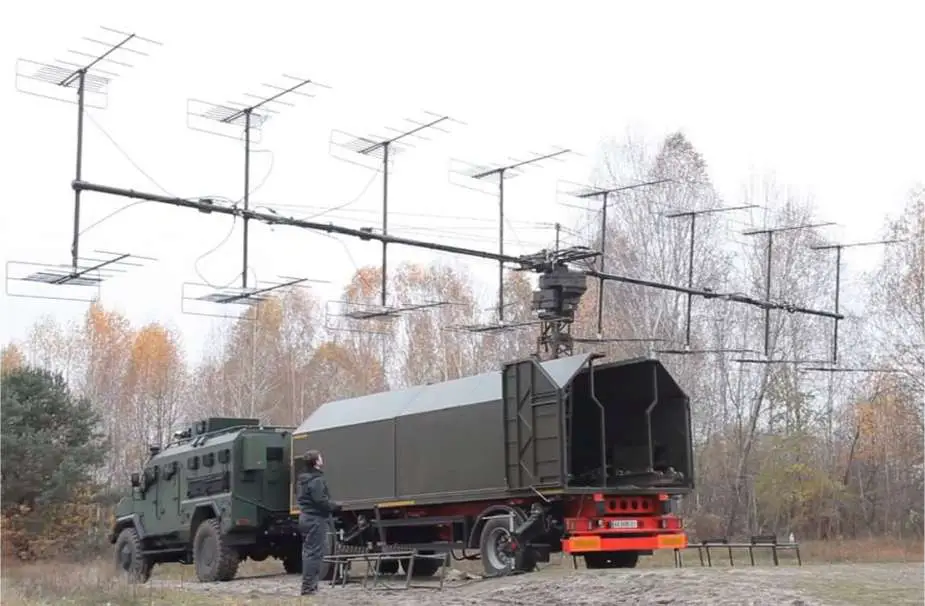Breaking news
Ukraine's P-18C radar brings Soviet-era system into 21st century.
According to Militarnyi on October 18, 2023, the System Electronic Export, a subsidiary of the National Association of Ukrainian Defense Industries (NAUDI), recently unveiled the P-18C mobile radiolocation station at the IDEB-2023 international exhibition in Slovakia. This new station represents a significant upgrade to the aging P-18 radar system, incorporating various improvements and innovations when compared to its predecessor, the P-18 Malakhit.
Follow Army Recognition on Google News at this link

The P-18C is the latest modernization by Ukraine of the Soviet-era P-18 (Picture source: NAUDI)
The P-18C radiolocation station is designed to operate on meter waves and offers multiple features that enhance its utility in military applications. It possesses the capability to automatically detect and determine the coordinates of targets, including azimuth and distance, transmitting this information to users in real time. The station's hardware is built to be robust, including modern life support systems, power supply mechanisms, and antenna lift and leveling systems. Additionally, it is equipped with a remote control, enhancing operational flexibility.
When compared to the P-18 Malakhit, the P-18C offers a series of improvements. These enhancements encompass an extended detection range of over 350 kilometers and an operational lifespan of 60,000 hours, aimed at improving durability and longevity. The station can track up to 250 targets simultaneously and has streamlined its operation by consolidating essential equipment onto a single chassis. It also features modern Linux-based software and an expanded frequency range of 140-180 MHz, which allows it to adapt to various operational requirements. The station also provides remote workplaces with a range of up to 500 meters.
The P-18 radar, initially designated as the 1RL131 Terek, was introduced during the Soviet era in 1970. It brought several improvements over its predecessor, the P-12, with the goal of enhancing overall air surveillance and reliability. These improvements included automatic frequency control, a moving target indicator to counter jamming, and the ability to display tracks from collaborating radar systems.
The P-18 radar is adaptable for both independent use and integration into air defense systems. Its primary function is to detect and track airborne objects, contributing to early warning systems and aiding in target tracking. The radar's antenna comprises sixteen vertically stacked Yagi antennas arranged in sets of eight, allowing for efficient scanning and precise target tracking.
The radar provides comprehensive coverage with a 360-degree azimuth scan rotating at 10 revolutions per minute. Adjusting the antenna's height and elevation during operation enhances scanning capabilities, with an elevation range from -5 to +15 degrees to ensure thorough airspace surveillance.
Additionally, the P-18 incorporates a secondary Identification Friend or Foe (IFF) radar system for identifying aircraft nationality. Operating in the Very High Frequency (VHF) spectrum, the system can detect targets up to 250 kilometers away and at altitudes of up to 35 kilometers. Its range measurement precision is approximately 1 km, with a power output of 260 kilowatts for effective surveillance.
The modernization efforts for the P-18 radar are focused on performance enhancement and extended operational life. Upgrades include solid-state transmitters and receivers, anti-jamming equipment, and advanced signal processing systems. In Ukraine, these initiatives have led to upgraded variants such as P-18MA, P-18MU, and P-18 Malakhit, with an emphasis on improving digital signal processing, interference resistance, and target tracking accuracy.



















